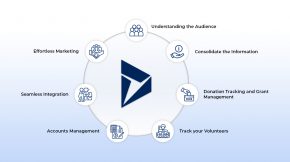Redefine Banking E-commerce with Voice-driven AI
Here is a sample Amazon Alexa conversation on an e-commerce site.
You: Alexa, Ask U.S. Bank, ‘What is my balance?’
Alexa: Your US Bank account ending with xxxx1312 has a balance of $40,000.
You: Can you find out where my major spending was in the last week?
Alexa: Sure! You have dined several times at restaurants and bought gadgets online, and have been buying junk food frequently.
You: Ok, can you tell me if this is impacting my health?
Alexa: You have not been on a walk for over a week, so you may have gained some weight and increased your stress levels.
You: Ok, any suggestions?
Alexa: Should I renew your gym membership?
You: Yes, please.
Alexa: I have renewed your membership at Star Health Gym. Your code has been sent to your mobile phone which can be used as your access.
You: Thanks. Can you tell me how my savings plan is doing?
Alexa: Last week, I shifted some savings from your savings account to a premium account so you have a better interest rate.
You: Thanks. Any pending bills?
Alexa: Your Internet bill for this cycle is due. The amount is $400. Would you like to pay for it now?
You: Yes, please pay it now.
Alexa: Ok. It has been paid. Anything else?
You: No, thank you. Has your bank started sending you messages about how its basic customer service is available on simple voice commands? If not, ask when they plan to roll this feature out. Here are some examples of how Voice has taken the customer service experience in the banking industry to a different level.
Voice-Driven AI Tasks for Alexa
1. Pay your bills with voice commands.
Royal Bank of Canada is adding payment functionality to its app. The new feature will give customers the ability to pay bills on their iPhone or iPad via Apple’s voice assistant, Siri. After a user voices the command, the RBC app will debit their account and send the payment, which is protected by TouchID.
2. Check account statements and deposit checks with voice.
USAA has introduced a voice-driven AI remote check deposit feature in its mobile app which helps visually impaired members scan a check or get a voice account statement. They can request statements for specific dates and payees.
3. Plan your investments for the future.
Some banks have also facilitated their voice assistants to provide suggestions to their customers regarding whether they are saving enough for retirement or not. These assistants are equipped with machine learning skills which help to provide suggestions on rebalancing the savings and fixed deposit accounts, and also to guide customers to save on best interest rates.
4. Identity verification.
Some banks have used “voiceprints” of their customers for security and identity verification as well. Barclays lately has used “voiceprint” for identity verification via their mobile app. This service creates a digital profile of the customer’s voice using data gathered during the course of three phone calls.
When customers call to use the bank’s services, the technology can identify them from the first few words they speak. Mimicking the voice of another person can’t trick the system. Using voice recognition can speed up the log-in process, eliminating the need to type a password every login attempt.
5. Voice used to transfer money or report lost cards.
Santander allows its customers a special voiceprint app called SmartBank. People can use voice recognition technology to perform multiple important tasks including making payments and transferring money or reporting a lost or stolen ATM and credit card. The app also provides instant bank statements within a specific time frame or with a specific retailer.
6. Login into account by Voice.
HSBC has developed a banking app to help customers to log in by giving their birthdate and account details and then saying “my voice is my password” into the mobile device. This digital voice piece is recorded in the app and reused for verification whenever a customer tries to log into their account. The company says it gauges 100 different characteristics of the human voice to verify a user’s identity. HSBC is also updating its voice-driven AI recognition software.
They claim that the app is still more secure than traditional PINs and passwords. But unlike with basic authentication, if your account is hacked, your biometric password–whether voice, fingerprint, or facial recognition–can’t be changed. And these are not all. There are several other services that have used these voice-based assistants and smart speakers to enhance their customer experience.
Voice Drive AI works with ML and Data Analytics
How AI is Creating a Buzz in Banking Artificial intelligence combined with Machine Learning and Data Analytics has made it possible for technology to understand and meet the needs of customers before they even ask. Combining machine learning with AI and cognitive technologies makes it even more effective in processing large volumes of information. Banks have started working on creating such smart voice assistants that are trained and supervised to read a large volume of data.
Careful injections of constant machine learning combined with cloud computing have brought major changes in the banking industry culture.
Banks are now more suited not only to resolve customer queries but also manage banking operations with proactive intelligence. Voice recognition systems have brought forth a great deal of convenience for bank customers. This system allows for converting text to speech so customer requests are understood in natural language.
The machine learning capability further allows the system to understand not only the consumer’s requests but also understand their spending behavior and decode human emotions within real-time limits.
Though security and adaptability are two major items posed against this rising technology in banking, they are still looked forward to as revolutionary changes. They offer unbelievable convenience while executing functions such as digital transactions, payments, loan processes, and deposits without having to engage in personal interactions.
Nuance was the first pioneer to introduce machine learning systems, though with limited audio and text capabilities. Apple’s Siri became the first technology to support this interactive algorithm with more mature potential. However, the success of voice assistant software has now led to fundamentally changing the way customers interact with financial organizations and bank commerce.
Security: The Biggest Question- Answered or Not?
Asking Google Home, Alexa, or Siri about the weather or music is one side of the coin. On the other side, individuals can ask these voice assistants about their other account balance or transfer money using a previously set-up four-digit code. Because smart speakers are still relatively new, there are still concerns regarding strangers hearing personal information in public; but industry experts agree solutions will emerge as these assistants mature with time and technology. Voice technology in banking has very low usage and adaptability, but it is sure to take off in the next couple of years.
Today, only two percent of respondents have used their voice to pay bills, and only one percent has transferred money to a friend through any type of device. However, the use of voice payments will nearly quadruple over the next five years to reach 31% of US adults — or 81 million consumers — by 2022, BI Intelligence estimates. Hire a Voice Skill Developer at Beyond Key Now!
Final Thought: Voice-Driven AI
Voice-based skills development can do wonders for your business, whether it’s in banking or any other sector. At Beyond Key, we have been developing voice-based skills for more than 2 years, and have a team of developers who are experts in developing and delivering new generation solutions with voice-enabled services. Are you searching for a voice-enabled skill developer for your business? Your search can end here! Reach out to us at [email protected] today!














